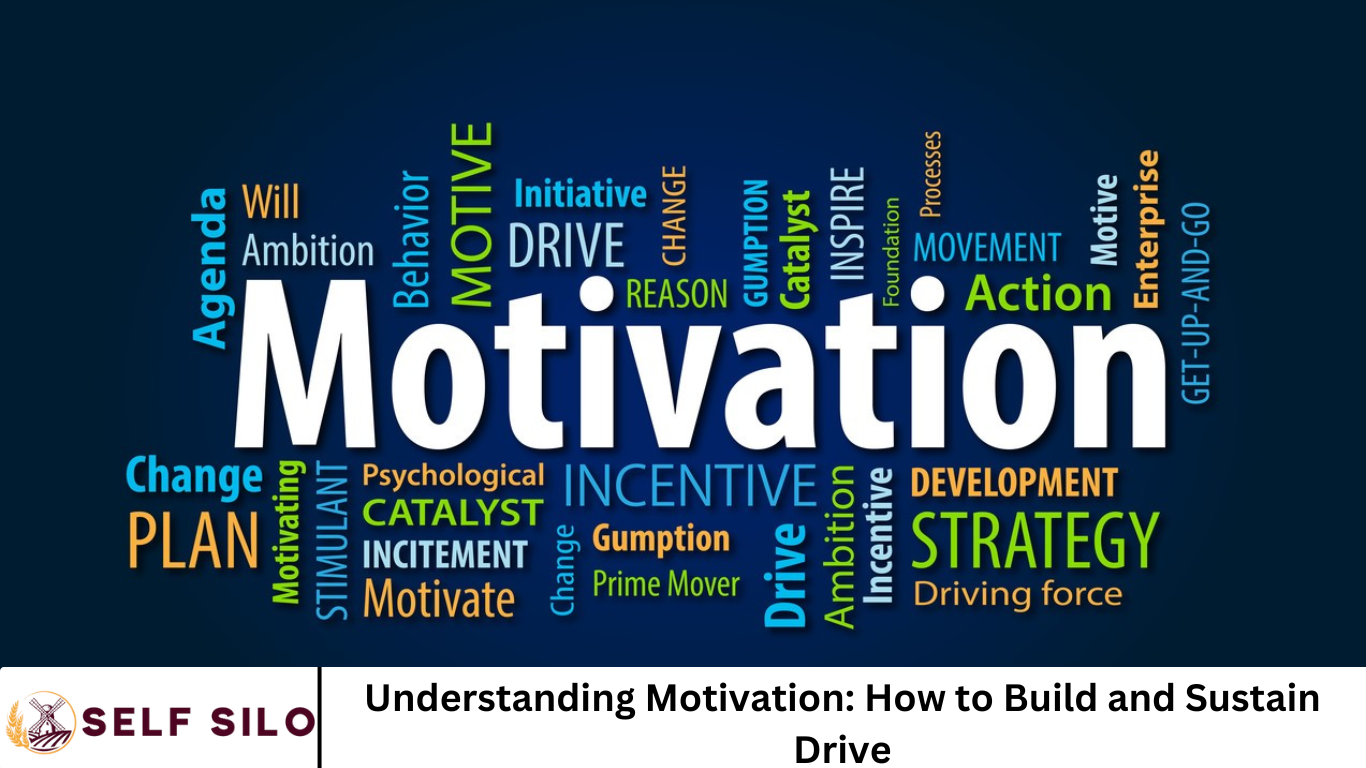Motivation is the inner force that compels us to take action. Whether it’s pursuing a career goal, starting a new fitness routine, or simply getting out of bed each morning, motivation is what propels us forward.
But despite its importance, motivation can often feel elusive. One day you’re full of energy and purpose, and the next, you’re struggling to find the will to move. This article explores the science behind motivation, practical strategies for building and sustaining it, and tips to overcome common obstacles.
More Read: How Successful People Start Their Mornings
What Is Motivation?
Motivation is defined as the process that initiates, guides, and maintains goal-oriented behaviors. It can stem from internal desires (intrinsic motivation) or external rewards (extrinsic motivation). For example, reading a book because you enjoy learning is intrinsic motivation, while studying to get a good grade represents extrinsic motivation.
Understanding the source of your motivation is crucial for sustaining long-term drive. Intrinsic motivation tends to be more enduring and satisfying, while extrinsic motivation can be effective in the short term but may wane over time.
The Psychology Behind Motivation
Several psychological theories explain how motivation works:
- Maslow’s Hierarchy of Needs: This theory suggests that people are motivated to fulfill basic needs (like food and safety) before moving on to higher-level needs (like esteem and self-actualization).
- Self-Determination Theory (SDT): SDT posits that people are most motivated when they feel autonomous, competent, and connected to others. When these needs are met, intrinsic motivation thrives.
- Expectancy Theory: This theory suggests that motivation is influenced by the expected outcome. If you believe your effort will lead to a desired result, you’re more likely to be motivated.
- Goal-Setting Theory: Setting specific and challenging goals increases motivation and performance. Clear goals provide direction and a sense of purpose.
Common Motivation Killers
Understanding what hinders motivation is just as important as knowing how to boost it. Common barriers include:
- Perfectionism: Fear of failure can lead to procrastination and inaction.
- Lack of clarity: Vague goals can make it difficult to take the first step.
- Burnout: Overworking without adequate rest reduces both mental and physical energy.
- Negative self-talk: Constant self-criticism can sap your confidence and motivation.
Recognizing and addressing these barriers can help you stay on track.
How to Build Motivation
Building motivation is about creating the right environment and mindset to take action. Here are proven strategies:
- Start Small: Taking a tiny first step helps build momentum. Action precedes motivation, not the other way around.
- Set SMART Goals: Goals should be Specific, Measurable, Achievable, Relevant, and Time-bound. Clear goals make progress easier to track and celebrate.
- Create a Routine: Habits reduce the need for motivation by automating behavior. Consistency is key.
- Visualize Success: Mentally rehearsing your goals helps increase confidence and commitment.
- Reward Yourself: Celebrate milestones to reinforce positive behavior. Choose meaningful and healthy rewards.
- Use Positive Affirmations: Replace negative thoughts with empowering beliefs. Positive self-talk boosts resilience and drive.
How to Sustain Motivation Over Time
Sustaining motivation is about maintaining momentum, even when initial excitement fades. Consider these tips:
- Track Progress: Use journals, apps, or calendars to log achievements. Seeing progress keeps you motivated.
- Stay Accountable: Share your goals with friends, mentors, or coaches. Accountability increases commitment.
- Stay Inspired: Read books, listen to podcasts, or follow people who motivate you. Continuous inspiration helps renew your drive.
- Adjust When Necessary: Be flexible. If a strategy isn’t working, tweak your approach rather than giving up entirely.
- Reconnect With Your ‘Why’: Regularly remind yourself of the deeper reason behind your goals. Purpose fuels perseverance.
- Take Breaks: Rest and recovery are essential. Overexertion can lead to burnout, which drains motivation.
Motivation in Different Life Areas
Motivation isn’t one-size-fits-all. Here’s how it applies in key areas of life:
1. Career:
- Set career goals aligned with your strengths and values.
- Seek feedback and opportunities for growth.
- Network with motivated peers to maintain momentum.
2. Health and Fitness:
- Choose enjoyable activities to increase intrinsic motivation.
- Track workouts and celebrate physical milestones.
- Set realistic expectations to avoid frustration.
3. Education:
- Break study tasks into manageable chunks.
- Use spaced repetition and active recall techniques.
- Join study groups for motivation and accountability.
4. Personal Growth:
- Set learning goals (e.g., reading a certain number of books).
- Practice self-reflection and mindfulness.
- Embrace discomfort as a sign of progress.
Tools and Resources to Boost Motivation
Leverage tools to enhance and sustain your motivation:
- Apps: Habit trackers (e.g., Habitica, Streaks), productivity timers (e.g., Forest, Pomodoro), and journaling apps (e.g., Day One).
- Books: “Atomic Habits” by James Clear, “Drive” by Daniel Pink, “The Power of Habit” by Charles Duhigg.
- Podcasts: The Tim Ferriss Show, The Tony Robbins Podcast, Optimal Living Daily.
- Communities: Online forums like Reddit’s r/GetDisciplined or local meetups and mastermind groups.
Frequently Asked Question
What is the difference between intrinsic and extrinsic motivation?
Intrinsic motivation comes from within—doing something because it’s inherently rewarding, like painting because you love it. Extrinsic motivation is driven by external rewards, such as money, praise, or grades. While both can be effective, intrinsic motivation tends to be more sustainable over time.
Why do I lose motivation so quickly?
Losing motivation often stems from setting unrealistic goals, lack of clarity, burnout, or relying solely on short-term rewards. To maintain motivation, break goals into smaller steps, focus on progress, and reconnect with your deeper “why.”
How do I get motivated when I don’t feel like doing anything?
Start small—take one tiny action. Motivation often follows action, not the other way around. Doing something as simple as writing a list, changing your environment, or setting a timer for five minutes can help break inertia.
What are the best strategies to stay motivated long term?
- Set SMART goals
- Track your progress
- Build habits and routines
- Reward yourself for milestones
- Surround yourself with supportive people
- Reflect on your purpose regularly
Can motivation be trained or developed?
Yes. Motivation is not a fixed trait—it can be strengthened through self-awareness, habit building, goal setting, and learning how to overcome resistance and setbacks. Like a muscle, the more you practice staying motivated, the easier it becomes.
How does goal setting help with motivation?
Goals provide direction and measurable progress, which fuels motivation. According to Goal-Setting Theory, clear and challenging goals increase performance and persistence. Writing down your goals and reviewing them regularly boosts commitment and focus.
What tools can help me stay motivated daily?
Helpful tools include:\n- Habit tracking apps (e.g., Habitica, Streaks)
- Pomodoro timers (e.g., Forest)
- Journals or planners
- Motivational podcasts and books
- Accountability partners or online communities
Conclusion
Motivation isn’t something you wait for—it’s something you create. By understanding the science behind motivation and applying practical strategies, you can take control of your drive and achieve your goals. Remember that motivation naturally ebbs and flows, and that’s okay. What matters is building habits, staying connected to your purpose, and taking consistent action. Start small, stay focused, and keep moving forward.


